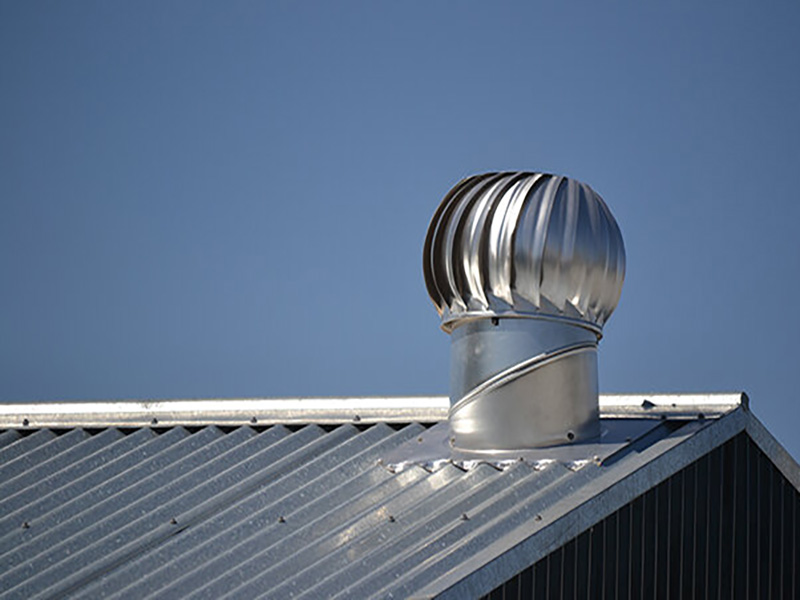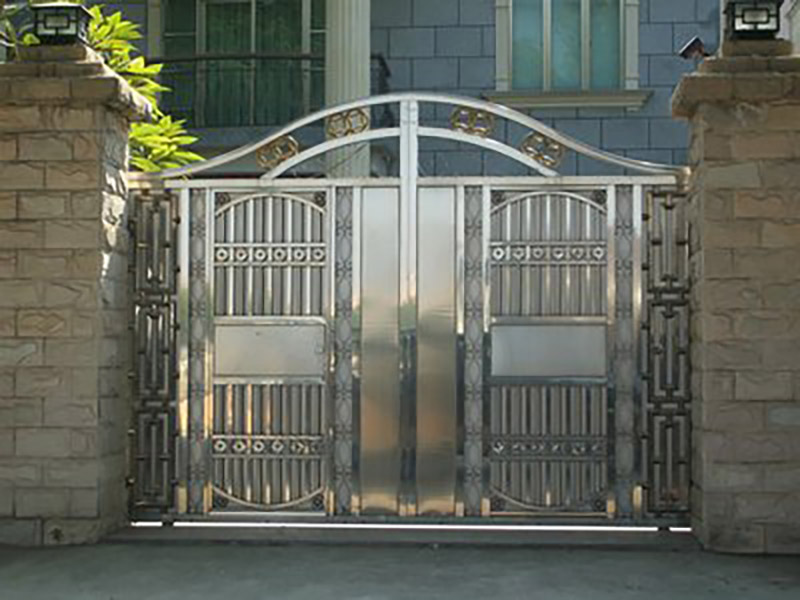

Abstract: Stainless steel material is steel that is not easy to rust. In fact, some stainless steel have both rust resistance and acid resistance (corrosion resistance).
The rust resistance and corrosion resistance of stainless steel are due to the formation of chromium rich oxide film (passive film) on its surface. What are the parameters of stainless steel? What are the national standards of stainless steel?
There are many classification methods for stainless steel material.
The following are common, among which the classification according to metallographic structure is the most common.
Basically, it can be divided into two systems: chromium series stainless steel (such as ferrite series and martensite Series) and chromium nickel series stainless steel (such as austenite series, abnormal series and precipitation hardening Series).
It can be divided into austenitic stainless steel materia, ferritic stainless steel materia, martensitic stainless steel materia, duplex stainless steel materia and precipitation hardening stainless steel materia.
It can be divided into stress corrosion resistant stainless steel, pitting corrosion resistant stainless steel, intergranular corrosion resistant stainless steel, etc.
It can be divided into free cutting stainless steel, non-magnetic stainless steel, low-temperature stainless steel and high-strength stainless steel.
Nearly 100 kinds of stainless steel materia have been incorporated into various standards in the world, and with the progress of science and technology and the development of industry and agriculture, new stainless steel brands are still increasing.
For a known brand of stainless steel materia, its chromium equivalent [Cr] and nickel equivalent [Ni] can be calculated according to its chemical composition, and then the structure and properties of the steel can be roughly estimated by using Schaeffler Delong stainless steel materia structure diagram.
1. Ferritic stainless steel material. Chromium content 12% ~ 30%. Its corrosion resistance, toughness and weldability increase with the increase of chromium content, and its chloride stress corrosion resistance is better than other kinds of stainless steel.
2. Austenitic stainless steel material. It contains more than 18% chromium, about 8% nickel and a small amount of molybdenum, titanium, nitrogen and other elements. Good comprehensive performance and resistance to corrosion of various media.
3. AUSTENITIC FERRITIC duplex stainless steel material. It has the advantages of both austenitic and ferritic stainless steel, and has superplasticity.
4. Martensitic stainless steel material. High strength, but poor plasticity and weldability.

When the steel contains about 18% Cr, 8% ~ 10% Ni and 0.1% C, it has stable austenite structure.
Austenitic chromium nickel stainless steel material includes famous 18Cr-8Ni steel and high Cr Ni series steel developed by increasing Cr and Ni content and adding Mo, Cu, Si, Nb, Ti and other elements.
Austenitic stainless steel material is non-magnetic and has high toughness and plasticity, but its strength is low. It can not be strengthened by phase transformation, but only by cold working.
If s, CA, Se, TE and other elements are added, it has good free cutting performance. In addition to the corrosion resistance of oxidizing acid medium, this kind of steel can also resist the corrosion of sulfuric acid, phosphoric acid, formic acid, acetic acid, urea, etc.
if it contains Mo, Cu and other elements. If the carbon content in this kind of steel is less than 0.03% or contains Ti and Ni, its intergranular corrosion resistance can be significantly improved.
Austenitic stainless steel material with high silicon has good corrosion resistance to nitric acid. Austenitic stainless steel has been widely used in all walks of life because of its comprehensive and good comprehensive properties.
Ferritic stainless steel material: stainless steel dominated by ferritic structure in use. The chromium content is 11% ~ 30%, with body centered cubic crystal structure.
This kind of steel generally does not contain nickel, and sometimes contains a small amount of Mo, Ti, Nb and other elements.
This kind of steel has the characteristics of high thermal conductivity, low expansion coefficient, good oxidation resistance and excellent stress corrosion resistance.
It is mostly used to manufacture parts resistant to atmospheric, steam, water and oxidizing acid corrosion.
This kind of steel has some disadvantages, such as poor plasticity, obvious reduction of post weld plasticity and corrosion resistance, which limits its application.
The application of out of furnace refining technology (AOD or VOD) can greatly reduce the interstitial elements such as carbon and nitrogen, so this kind of steel is widely used.
it is a stainless steel material with about half of austenitic and ferritic structures. When the content of C is low, the content of Cr is 18% ~ 28%, and the content of Ni is 3% ~ 10%. Some steels also contain Mo, Cu, Si, Nb, Ti, N and other alloy elements.
This kind of steel has the characteristics of both austenitic and ferritic stainless steel material.
Compared with ferrite, it has higher plasticity and toughness, no room temperature brittleness, significantly improved intergranular corrosion resistance and welding performance.
At the same time, it also maintains the 475 ℃ brittleness, high thermal conductivity and Superplasticity of ferritic stainless steel material. Compared with austenitic stainless steel, it has high strength and significantly improved resistance to intergranular corrosion and chloride stress corrosion.
Duplex stainless steel material has excellent pitting corrosion resistance and is also a nickel saving stainless steel material.

stainless steel whose mechanical properties can be adjusted by heat treatment. Generally speaking, it is a kind of hardenable stainless steel. The typical brand is Cr13, such as 20cr13, 30cr13, 40cr13, etc.
After quenching, the hardness is high, and different tempering temperatures have different strength and toughness combinations. It is mainly used for steam turbine blades, tableware and surgical instruments.
According to the difference of chemical composition, martensitic stainless steel can be divided into martensitic chromium steel and martensitic chromium nickel steel.
According to the different structure and strengthening mechanism, it can also be divided into martensitic stainless steel, martensitic and semi austenitic (or semi martensitic) precipitation hardening stainless steel and maraging stainless steel material.
200 series – chromium nickel manganese austenitic stainless steel materia
300 series – chromium nickel austenitic stainless steel material
Model 301 – good ductility for molded products. It can also be hardened rapidly by machining. Good weldability. The wear resistance and fatigue strength are better than 304 stainless steel material.
Model 302 – the corrosion resistance is the same as that of 304. Because the carbon content is relatively high, the strength is better.
Model 303 – it is easier to cut than 304 by adding a small amount of sulfur and phosphorus.
Model 304 – general model; 18 / 8 stainless steel materia. The GB brand is 0Cr18Ni9.
Model 309 – better temperature resistance than 304.
Model 316 – the second most widely used steel after 304, which is mainly used in food industry and surgical equipment. Adding molybdenum makes it obtain a special corrosion-resistant structure.
Because it has better chloride corrosion resistance than 304, it is also used as “marine steel”. SS316 is usually used in nuclear fuel recovery units. Grade 18 / 10 stainless steel generally meets this application grade.
Model 321 – other properties are similar to 304 except that the risk of weld corrosion of the material is reduced due to the addition of titanium.
Model 408 – good heat resistance, weak corrosion resistance, 11% Cr, 8% Ni.
Model 409 – the cheapest model (British and American), usually used as automobile exhaust pipe, is ferritic stainless steel materia (chromium steel).
Model 410 – martensite (high strength chromium steel), good wear resistance and poor corrosion resistance.
Model 416 – added sulfur to improve the processability of the material.
Model 420 – “cutting tool grade” martensitic steel, similar to the earliest stainless steel such as Brinell high chromium steel. It is also used for surgical tools, which can be made very bright.
Model 430 – ferritic stainless steel for decoration, such as automotive accessories. Good formability, but poor temperature resistance and corrosion resistance.
Model 440 – high strength cutting tool steel, with slightly higher carbon content, can obtain higher yield strength after appropriate heat treatment, and the hardness can reach 58hrc.
It is one of the hardest stainless steels. The most common application example is “razor blade”.
There are three common models: 440A, 440b, 440C, and 440f (easy to process).
600 series – Martensitic precipitation hardening stainless steel materia.
Model 630 – the most commonly used precipitation hardening stainless steel materia model, usually also known as 17-4; 17%Cr,4%Ni。
Identification method of stainless steel materia
Numbering and representation of steel
① International chemical element symbols and national symbols are used to represent the chemical composition, and Arabic letters are used to represent the component content: for example, China and Russia 12CrNi3A
② Use fixed digit numbers to represent steel series or numbers; For example, the United States, Japan, 300 series, 400 series and 200 series;
③ The serial number is composed of Latin letters and order, which only indicates the purpose.
① Use element symbols
② Application, Chinese Pinyin, open hearth steel: P, boiling steel: F, killed steel: B, class a steel: A, T8: te8, GCr15: Ball
◆ bonded steel and spring steel, such as 20CrMnTi 60simn, (C content is expressed in ten thousandths)
◆ stainless steel and alloy tool steel (C content is expressed in thousands), such as one thousandth of 1Cr18Ni9 (i.e. 0.1% C), stainless C ≤ 0.08%, such as 0Cr18Ni9, ultra-low carbon C ≤ 0.03%, such as 0cr17ni13mo
The American Iron and Steel Institute uses three digits to identify various standard grades of malleable stainless steel materia. Of which:
① Austenitic stainless steel materia is indicated by numbers of 200 and 300 series,
② Ferritic and martensitic stainless steels materia are represented by 400 series numbers. For example, some more common austenitic stainless steels are marked 201, 304, 316 and 310,
③ Ferritic stainless steel is marked with 430 and 446, martensitic stainless steel is marked with 410, 420 and 440C, duplex (austenite ferrite),
④ Stainless steel materia, precipitation hardening stainless steel and high alloy with iron content less than 50% are usually named by patent name or trademark.

For Further Details,Please Feel Free To Contact Us: